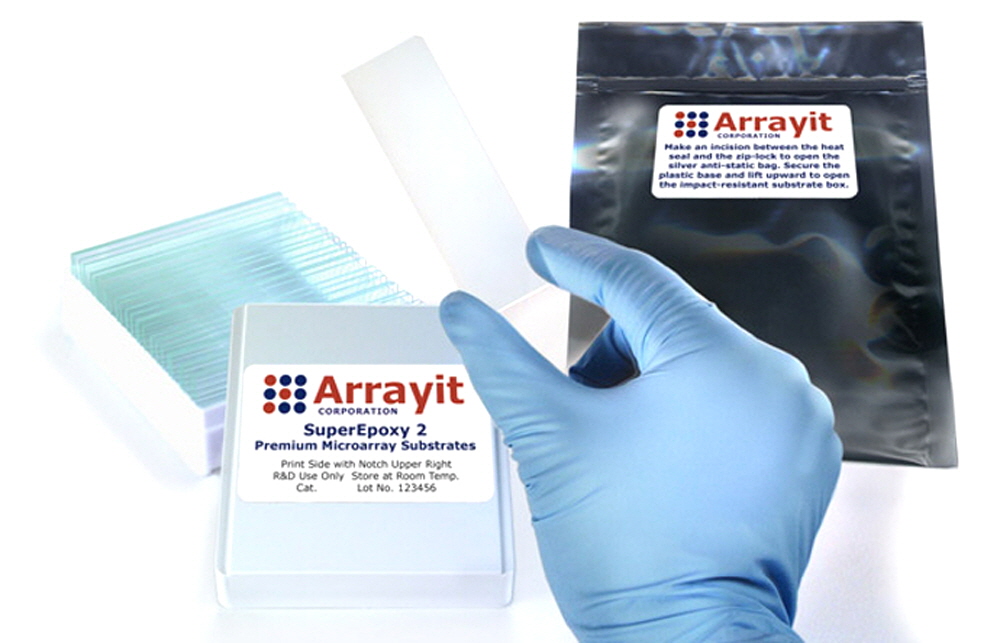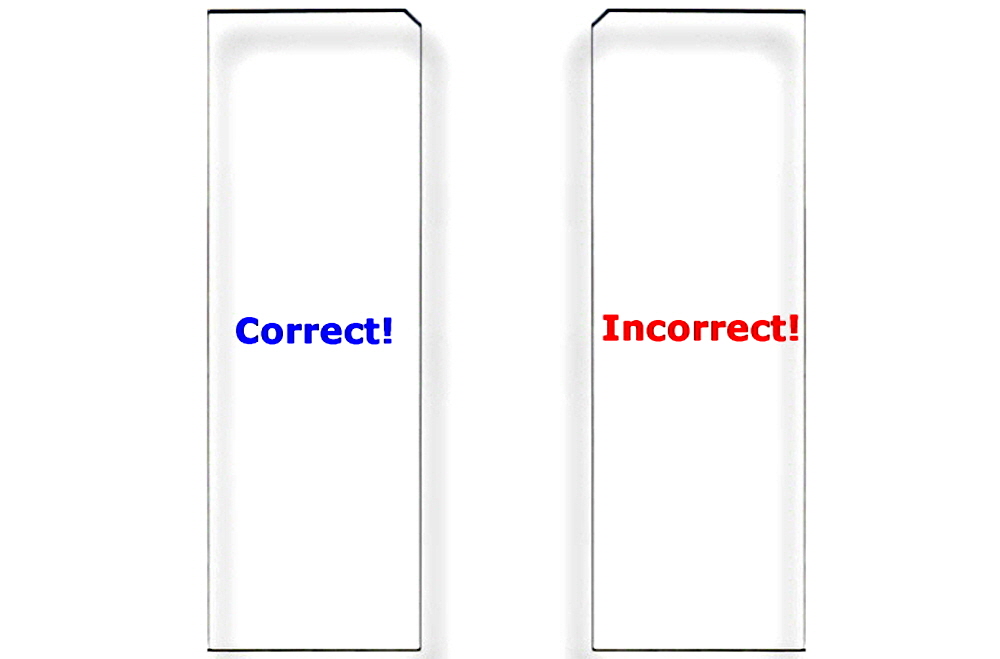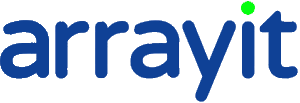SuperEpoxy Slides
Data Sheet
![]() Shop this product in our online store
Shop this product in our online store
Products - Microarray Substrates & Slides - SuperEpoxy and SuperEpoxy 2 Substrate Slides for Oligonucleotide, cDNA and BAC DNA Microarray Manufacturing

Arrayit is pleased to announce SuperEpoxy 2, the newest version of our original SuperEpoxy Microarray Substrates product line. Arrayit substrates are the only microarray substrates in the world that offer a polished atomically smooth glass surface (±20 angstroms), for the ultimate in silicon dioxide homogeneity and data precision. SuperEpoxy 2 Substrates are manufactured to “open platform” dimensions (25 x 76 mm), cleaned at the atomic level in state-of-the-art class 1 cleanrooms, and treated with our ultra-pure epoxy surface chemistry for highly-reactive covalent coupling efficiency and low background. Heat-sealing in anti-static packaging improves shelf life and eliminates electrostatic accumulation. SuperEpoxy 2 Substrates have a proprietary corner chamfer for unambiguous side and end orientation, which greatly improves usability during manufacturing. SuperEpoxy 2 products outperform standard optical quality glass from other vendors and are the substrates of choice for high-density DNA microarray manufacturing applications using contact and non-contact printing methods. SuperEpoxy 2 products are compatible with all major brands of microarrayers and scanners.
Table of Contents
- Introduction
- Quality Control
- Product Description
- Technical Note
- Technical Assistance
- Short Protocols
- Complete Protocols
- Recommended Equipment
- Troubleshooting Tips
- Ordering Information
- Storage Conditions
- Warranty
Introduction
Congratulations on taking a big step towards improving the economies of scale, quality and speed of your proteomics research. This booklet contains a complete set of protocols outlining the steps and principles needed to use ArrayIt® SuperEpoxy Substrates.
Quality Control
Arrayit assures the performance of this product. The finest scientific research went into the development of this product. Rigorous quality control monitoring on a lot-by-lot basis guarantees that the product exceeds the highest industry standards.
Product Description
Arrayit's ArrayIt® SuperEpoxy Microarray Substrates provide the highest quality glass microarray printing substrate at an affordable price. All of our substrates are manufactured in state-of-the art class 10 cleanrooms, with 0.1 µm filtered air, and temperature and humidity control. Cleanroom manufacture eliminates contamination of the microarray surface with particulates, proteases, nucleases and other contaminants that impair the quality of microarray experimentation. Compare our SuperEpoxy Substrates to traditional microarray slides and you will see the difference.
Users will appreciate the following product features:
- Polished to atomic surface smoothness <±20 angstroms over 1.0 µm2
- Superior substrate flatness of <0.036 mm over 25 x 76 mm
- Only polished glass substrate/slide in the microarray industry
- Homogenous SiO2 groups provide superior silane reactivity
- Epoxide surface density of 5 x 10^12 groups per mm^2
- Vastly superior to unpolished or flame polished glass from other vendors
- Ultimate surface for ultra-high density DNA and protein microarray manufacturing including micro-mirror, photolithography and contact printing
- Used by high-volume microarray manufacturing companies
- Used by overseas companies for diagnostics
- Topological smoothness ensures uniform hybridization layer and scanning
- Manufactured in a state-of-the-art class 1 cleanrooms
- Ultra-low intrinsic fluorescence and background noise
- Can be used as a starting point for gel and membrane coatings (e.g. polyacrylamide and nitrocellulose)
- Used by major academic core facilities
- Open platform dimensions compatible with all major brands of microarrayers and scanners
- Precise physical dimensions (25 ± 0.2 mm x 76 ± 0.3 mm x 0.940 mm ± 0.025 mm)
- Proprietary corner chamfer (1.4 mm) provides unambiguous side and end orientation to simplify printing and processing
- Finished edges enhance user safety
- Excellent refractive index, transmission and hardness specifications
- Sophisticated anti-static packaging improves usability
- Offered with or without bar-codes
- Custom laser and chrome fiducials available upon request
- Product arrives “ready to print” with no additional processing required
- High-volume 100,000 piece per month manufacturing capabilities
- Free of particulate, protease and nuclease contamination
- High efficiency covalent coupling via highly reactive epoxide groups
- DNA coupling via nucleotide amine residues
- Supports both contact printing and ink-jet printing
- Protein coupling complete within minutes after printing
- No cross-linking or baking required for coupling
- “Zero” background fluorescence
- Optimal reactive group density of 5 x 1012 reactive groups per mm2
- Uniform epoxide density of ±5% across the substrate
- Print oligonucleotides, cDNAs, BACs, RNA
- Uniform feature size
- 25 substrates per box
- Anti-static and impact resistant packaging
- Three month shelf life at room temperature
Technical Note
The “substrate noise” is the sum of all non-sample and non-instrument contributions to the background reading including intrinsic fluorescence of the substrate and reflection off the substrate surface. Because substrate noise is measured using a scanning or imaging device, as a practical matter substrate noise typically includes intrinsic fluorescence and reflection, as well as all of the sources of instrument noise (e.g. dark current, shot noise, electronic noise and optical noise). Most modern scanners and imagers have very low instrument noise, which means that intrinsic fluorescence and reflection dominate the substrate noise reading. Substrate noise is obtained by measuring the fluorescent reading of the substrate “right out of the box” and prior to reacting the substrate with a fluorescent sample. Please do not confuse substrate noise (i.e. background before the substrate is reacted with a sample) and microarray noise (i.e. background after the substrate has been reacted with a sample), as these two readings are very different. For nearly all applications and assays, microarray noise greatly exceeds substrate noise and therefore concerns about substrate noise are entirely academic because the latter does not contribute to the total background reading observed when the product is used in real experiments (see below).
The table below summarizes the substrate noise (actually intrinsic fluorescence + reflection + instrument noise) observed with our substrates. Substrate noise readings were taken at very high sensitivity (90% laser and 90% photomultiplier tube or PMT), settings that are well beyond those used for biological experiments. Typical instrument settings for biological experiments with the ScanArray Express are 20-40% laser power and 80% PMT. The ScanArray Express has 20- to 30-fold greater sensitivity than the ScanArray 3000, and correspondingly the substrate noise readings are up to 30-fold higher on the Express compared to the 3000. Unmodified glass substrates (i.e. SuperClean) produce the lowest substrate noise readings, followed SuperEpoxy, SuperAmine, and SuperAldehyde. Organic treatments (e.g. epoxy, amine and aldehyde) increase substrate noise compared to naked glass because organic molecules formed during derivation fluoresce at an extremely low but detectable level. For nearly all applications and assays, the non-sample contributions to background noise (intrinsic fluorescence, reflection, and instrument noise) are much less than the background noise contributed when the substrate or microarray is reacted with a fluorescent sample. In these cases, substrate noise (though it exists) is irrelevant to the use of our products, because it does not contribute in any measurable way to the background reading of the reacted chip. In rare cases involving extremely low background samples or gene expression measurements of rare transcripts, substrate noise may approach sample noise in magnitude. In these cases, it may be desirable to use a substrate that has a lower intrinsic fluorescence and reflection, such as SuperAmine instead of SuperAldehyde.
For best results, please test our products in the context of REAL EXPERIMENTS rather than simply taking note of the fact that our Substrates manifest substrate noise that is greater than plain glass. ALL SUBSTRATES that contain an organic treatment or coating will produce some intrinsic fluorescence and reflection. Please also test our product “right out of the box” rather than waiting hours or days to measure the substrate noise. Fluorescent contaminants present in non-cleanroom air including cleaning agents, solvents used in marking pens, and hydrocarbon emissions from vacuum pumps, arrayers, centrifuges and other instruments can elevate the substrate noise reading considerably. Please also note that airborne particles including dust and other particulates greatly elevate the background reading because these particles are highly reflective in the presence of laser and white excitation light. Understanding the technical details of our products is important and we recommend that you commit these concepts to working memory as you proceed with your experiments.
Table. Substrate noise
Product |
Average substrate noise (ScanArray 3000) |
Maximum allowable substrate noise (ScanArray 3000) |
Average substrate noise (ScanArray Express) |
Maximum allowable substrate noise (ScanArray Express) |
SuperClean |
88 |
200 |
501 |
1,250 |
MirrorClean |
63 |
150 |
377 |
950 |
SuperEpoxy |
157 |
250 |
456 |
1,500 |
MirrorEpoxy |
114 |
475 |
348 |
1,125 |
SuperAmine |
229 |
500 |
861 |
2,000 |
MirrorAmine |
168 |
375 |
636 |
1,500 |
SuperAldehyde |
278 |
500 |
729 |
2,000 |
MirrorAldehyde |
217 |
375 |
568 |
1,500 |
Technical Assistance
Please contact us if you have any comments, suggestions, or if you need technical assistance. By electronic mail: arrayit@arrayit.com (under the subject heading, please type, “Technical assistance”). By telephone: (408) 744-1331, Monday–Friday, PST 9:00am - 4:30pm. Please remember that we want to hear about your successes!

Figure 1. SuperEpoxy, SuperEpoxy 2 and MirrorEpoxy Coupling Chemistry. Shown is a schematic representation of a DNA molecule (red ribbon) coupling to a SuperEpoxy Substrate (rectangle). Oligonucleotides, cDNAs and RNAs contain primary amine groups on the A, G, and C residues. The lone electron pair (double dots) attack the electrophilic carbon on the epoxide group (arrow), forming a covalent bond (right panel) between the DNA and the substrate. Oligonucleotides containing C6 or C12 amino linkers on the 5’ or 3’ prime end bind strongly to the SuperEpoxy surfaces. Molecular linkers between the glass substrate slide and the epoxide groups facilitate interactions between bound DNA and protein molecules and their binding partners in solution. Oligonucleotides containing C6 or C12 amino linkers on the 5’ or 3’ prime end bind strongly to the SuperEpoxy surfaces. Molecular linkers between the glass substrate slide and the epoxide groups facilitate interactions between bound DNA and protein molecules and their binding partners in solution.

Figure 2. Correct Substrate Orientation. Shown is a graphic of two ArrayIt® Microarray Substrates, showing the correct and incorrect orientation for use. In the correct orientation (blue graphic), the chamfer will be located in the upper right corner and samples should be printed on the side facing upward, which is the same side that contains the word “Correct!”. In the incorrect orientation (red graphic), the chamfer will be located in the upper left corner, placing the backside facing upward, which is the side that contains the word “Incorrect!”. Only one side of ArrayIt® Microarray Substrates is suitable for printing. Please print on the correct side only.
DNA Short Protocol (Steps 1-7)
1. Suspend DNA samples in Micro Spotting Solution Plus.
2. Print DNA samples onto SuperEpoxy Substrates.
3. Process the printed DNA microarrays.
4. Hybridize the processed microarrays with fluorescent probe.
5. Wash the microarrays to remove unreacted fluorescent probe.
6. Scan the microarray to produce a fluorescent image.
7. Quantitate and model the fluorescent data.
DNA Complete Protocol (Steps 1-7)
1. Suspend DNA samples in Micro Spotting Solution Plus. Obtain 0.2-1.0 µg/µl cDNA products or 60-100 µM oligonucleotides and add an equal volume of 2X Micro Spotting Solution Plus. Mix the samples by pipetting up and down 10 times. DNA samples should be free of aggregates and particulates that can clog printing devices and impair attachment to the microarray substrate. Aggregates and particulates can be removed by purification, centrifugation or filtration. At 30% coupling efficiency, a 30 µM oligonucleotide will produce a target density of approximately 2 x 10^11 oligonucleotides per mm2 of substrate. A 90 µm microarray spot contains approximately 1.6 x 10^9oligonucleotide molecules.
2. Print DNA samples onto SuperEpoxy Substrates. The SuperEpoxy surface couples cDNAs, oligonucleotides and RNAs extremely efficiently owing to the high reactivity of the epoxide groups. Coupling is efficient and use of amino linkers for oligonucleotides improvies results but is not required. For best coupling results store printed microarrays overnight at 30% humidity or less. Allowing printed spots to dry concentrates DNA to the spot and increases binding. If low binding is observed, baking can be implemented to increase binding. Bake at 80C for 1 hour. DNA target molecules retain their capacity to hybridize to fluorescent probe molecules. Printed microarrays should be stored unprocessed to protect coupled molecules. Micro Spotting Solution Plus contains components that stabilize printed DNA, but only has a slight denaturing effect. If printing BACs to this surface for CGH applications, use of a dentaturing printing buffer is recommended. Processing should be performed just prior to use for best performance.
3. Process the printed DNA microarrays. Once the printing process is complete, store microarrays printed and unprocessed. Prior to hybridization microarrays can be blocked using BlockIt blocking buffer for ultra low background results prior to any wash steps. Wash the printed microarrays to remove unbound DNA molecules, residual blocking buffer and printing buffer components from the substrate. DNA binding to the SuperEpoxy surface is extremely stable and microarrays can be washed and boiled without significant loss of coupled DNA. A good washing protocol for cDNAs and long oligonucleotides is the following: wash 2 min at room temperature in Wash Buffer A, wash 2 min at room temperature in Wash Buffer B, denature DNA if necessary for 2 min at 100°C in dH2O, cool 10 sec at room temperature, and fix by plunging for 2 min in ice cold 100% ethanol. The processed microarrays can be washed using a High Throughput Wash Station and dried using a Microarray High-Speed Centrifuge.
4. Hybridize the processed microarrays with fluorescent probe. Hybridization reactions can be performed under cover slips using a hybridization volume of 2 µl per cm2 of cover slip area. Preheating the substrate and hybridization buffer may reduce background fluorescence. ArrayIt® brand UniHyb™ Hybridization Solution and HybIt™ Hybridization Solution are excellent hybridization buffers. Hybridization times of 1-6 hours are usually sufficient to produce strong fluorescent signals. A Hybridization Cassette should be used to prevent sample evaporation during hybridization reactions. Automation can also be used.
5. Wash the microarrays to remove unhybridized fluorescent probe. Once the hybridization reaction between the bound target DNA and the fluorescent probe molecules is complete, wash the microarray to remove the unbound fluorescent molecules. For cDNA and long oligo microarrays, the following wash protocol works well: 5 min at room temperature with Wash Buffer A, 5 min at room temperature with Wash Buffer B , and 1 min at room temperature in Wash Buffer C. For short oligonucleotide microarrays, the following wash procedure works well: 5 min at room temperature with Wash Buffer 1, 5 min at room temperature with Wash Buffer 2, and 1 min at room temperature in Wash Buffer 3. Washes can be performed using a High Throughput Wash Station. After the wash procedure, dry by spinning in a Microarray High-Speed Centrifuge.
6. Scan the microarray to produce a fluorescent image. The fluorescent DNA microarray can be scanned or imaging using any of a number of high quality commercial detection instruments from ArrayIt®, Perkin Elmer (Boston, MA), Virtek (Ontario, Canada), Axon (Union City, CA), and many others. Instrument settings can be adjusted to optimize the imagine process.
7. Quantitate and model the fluorescent data. DNA microarray data from the fluorescent image can be quantified, mined and modeled using many different commercial software packages. Perkin Elmer (Boston, MA), Virtek (Ontario, Canada), Axon (Union City, CA), BioDiscovery (Marina del Ray, CA), and many others make excellent products
Shelf Life
When using SuperEpoxy and SuperEpoxy 2, it is best to use the product within 2 months of the manufacturing date. For example, lot 050625, was made on June 25, 2005. Once microarrays are printed, samples are covalently bound and stable for long periods of time. Protein microarrays scan be stored at 4C. DNA microarray storage conditions are clean and dry. These substrates are made often and customers are always guaranteed a fresh lot. SME and SME2 can also be made to order, Contact arrayit@arrayit.com for more information.
Troubleshooting Tips
Poor printing quality:
- Incomplete mixing of protein samples
- Poor printing environment (50% humidity and 25°C recommended).
- Clogged Micro Spotting Pins
- For more information on troubleshooting printing problems please click here
Poor protein coupling:
- Contaminants in samples
- Poor printing buffer (PPB highly recommended)
Weak fluorescent signals:
- Poor binding of fluorescent proteins
- Probe labeling inefficient
- Washes too harsh
Scientific Publications
Click here and here for recent scientific publications using ArrayIt® brand SuperEpoxy Microarray Substrates from Arrayit International, Inc.
Recommended Equipment and Reagents
NanoPrint™ 2 Microarrayers
SpotBot® 4 Personal Microarrayers
InnoScan® Microarray Scanners
SpotLight™ 2 Microarray Scanners
Microarray Hybridization Cassettes
High Throughput Wash Station
Microarray High-Speed Centrifuge
BlockIt™ Blocking Buffer
Microarray Air Jet
Microarray Cleanroom Wipes
PCR Purification Kits
Micro-Total RNA Extraction Kit
MiniAmp mRNA Amplification Kit
Indirect Amino Allyl Fluorescent Labeling Kit
Universal Reference mRNA
Green540 and Red640 Reactive Fluorescent Dyes
Hybridization Buffers

